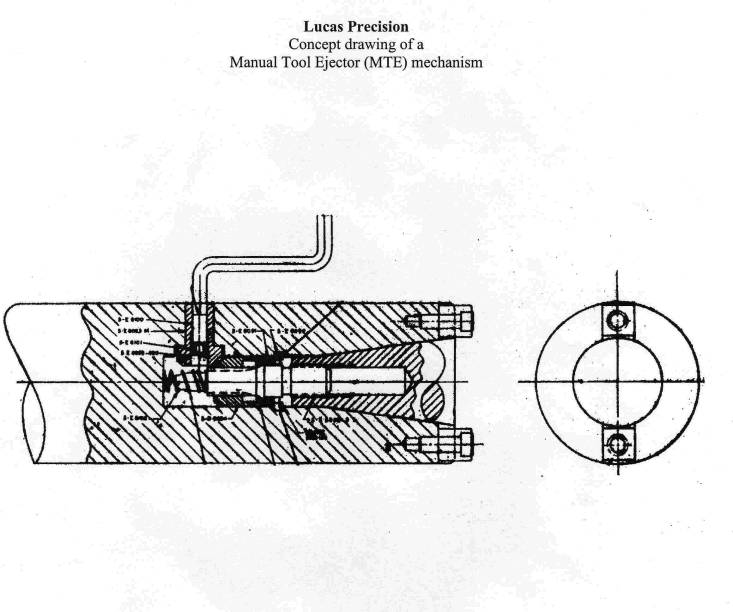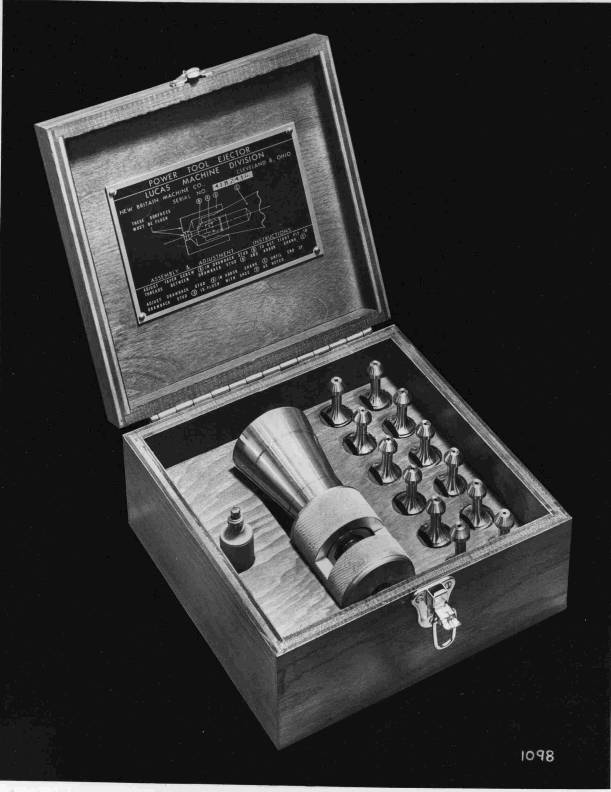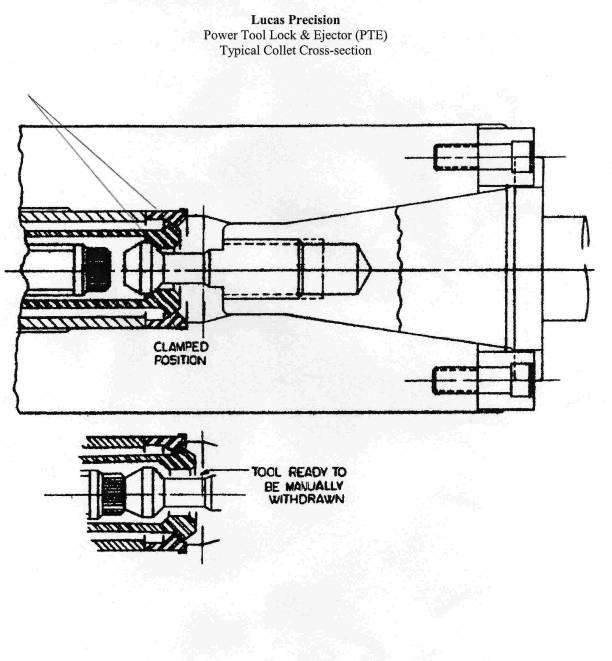Power Tool Ejector & Manual Tool Ejector
41B & 42B OLD-STYLE PTE Setting Gage Calibration
Recalibration of the setting gauge may be required to maximize the holding power of the Lucas PTE tool holding mechanism for any one of several reasons. The more common reasons are:
50MM Tooling Arbor Identification
There are three primary types of No. 50 Milling Machine tapered tool holders that Lucas spindles were designed to accept. It is essential to correctly identify the type of tool arbor that you are trying to us in your Lucas so that we can supply the correct Drawback Collet Adapters and Tooling Drive Keys.
Here is a simple method of 50MM Tooling Arbor Identification. Simply use a micrometer and check the distance across the Driving Key 'flats' on the Tooling Arbor you wish to use and compare the dimesion to the information below.
Drawstud Setting and Use Instructions
Power Tool Lock & Ejector System
The Lucas Power Tool Lock & Ejector tool holding system is designed to give maximum tool holding power, minimum tooling 'spring', and allow for rapid changing of the tool holder shank.
The Lucas PTE system is a 'Wedge-Locking' system that delivers much greater 'holding power' than is possible with a simple collet if it is properly used. Following, are a few simple rules for how to properly install and adjust the Lucas PTE drawstud into tooling shanks.
Late Model PTE Setting Gage Calibration
Recalibration of the setting gauge may be required to maximize the holding power of the Lucas PTE tool holding mechanism for any one of several reasons. The more common reasons are:
Lucas Proprietary PTE Mechanism Notes
Design Highlights and Operational Rational
The greatest tool-retention holding power of the Lucas PTE system occurs when the area of contact on the outer cone of the Collet equals the area of contact of the inner cone of the Collet. At any point other than this, a possibility exists that one part will begin to 'bed' thru the layer of hardness into the mating part and allow the mechanism to loosen.
Manual Tool Ejector (MTE) Cross Section
More Lucas PTE Tips
A commonly seen problem with the Lucas PTE system is a foreshortening of the travel length of the collet - resulting in an inability to insert or remove tooling from the spindle of the machine.
While this symptom may indicate a serious PTE problem for which the system needs to be returned to the factory for a complete rebuild, it may also indicate a minor and easy to repair problem. Here is how to test for this problem.
MTE Bevel Gear Fitting
Manual Tool Ejector (MTE) Bevel Gear Fitting Notes
When fitting the bevel gear sets used in Lucas Manual Tool Ejector assemblies, care must be taken to assure that the bevel gears are properly meshed to give maximum tooth engagement (for strength) while still having sufficient backlash to prevent difficult rotation and a subsequent 'bony' feeling to the gears.
Power Tool Lock & Ejector System Explanation
Power Tool Lock & Ejector System Explanation.PDF
PTE Service Tips
Power Tool Lock & Ejector (PTE) Service Tips
A customer should attempt only simple, basic service operations on a Lucas PTE system. I do not recommend that ANY customer attempt to perform an 'in field' rebuild of the PTE. There are too many different designs, and too many 'shop tricks'. Since a tool that is released from the Spindle while the machine is running presents a considerable personnel hazard, even telephone assistance beyond the most basic items is not provided.
PTE Setting Gage with Adapters & Spindle Plug
PTE Typical Cross Section thru Collet
Testing 41B & 42B PTE Interlocks
The Power Tool Ejector system used in many Lucas machines for tool retention is a proprietary system used only by Lucas.
Air pressure is used to eject the tool from the Spindle and to hold the air cylinder in a retracted position and away from the actual PTE mechanism. Spring washers power the actual Clamping.
The air cylinder MUST NOT contact the PTE mechanism when the spindle is rotating or considerable damage will be done, not to mention the personnel hazard that would occur is the tool was 'thrown' from the Spindle.



